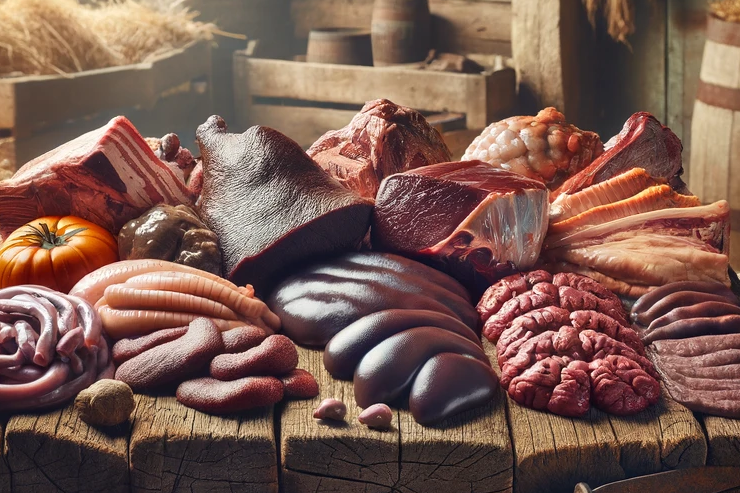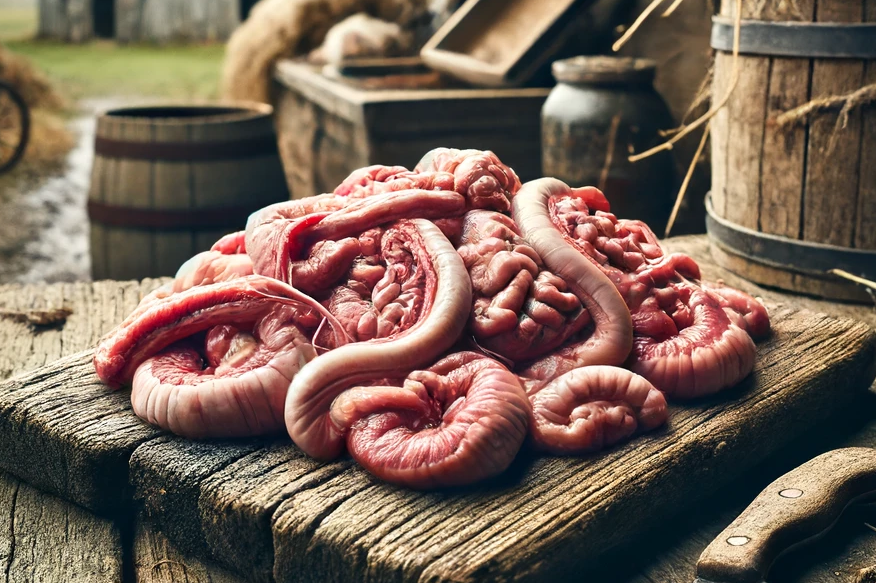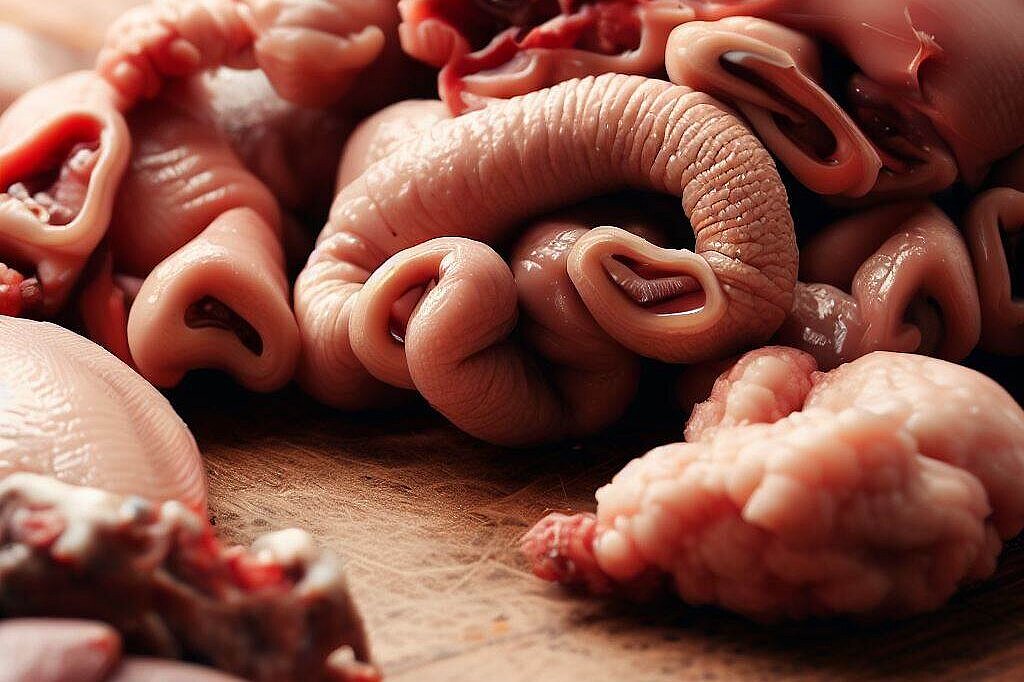Buffalo innards

Benefits of buffalo offal for dogs
Buffalo offal has several benefits for dogs that make it a valuable addition to a dog's diet. Here are some of them:
- Buffalo offal is rich in protein, which is important for building muscle and maintaining bodily functions. Protein is also a good source of energy for active dogs.
- Buffalo offal contains many vitamins and minerals that are important for the health of the skin, coat, eyes, nerves and immune system. For example, they provide vitamin A, B vitamins, iron, zinc and selenium.
- Compared to other types of meat, buffalo offal is low in fat and calories. This can help to control the dog's weight and reduce the risk of obesity and related diseases.
- Buffalo offal is a natural and species-appropriate diet for dogs, in line with their instincts. Dogs are descended from wolves, which would also eat offal in the wild. This can promote the dog's well-being and satisfaction.
Disadvantages of buffalo offal for dogs
Buffalo offal has some disadvantages for dogs. Here are some of them:
- Buffalo offal can contain bacteria or parasites that can lead to gastrointestinal distress or more serious infections. Therefore, you should always cook or freeze them well before giving them to your dog.
- Buffalo offal can cause allergies or intolerances if your dog is sensitive to certain proteins or other ingredients. This can manifest itself as a skin rash, itching, diarrhea or vomiting. If you notice such symptoms in your dog, you should consult a vet and stop feeding buffalo offal.
- Buffalo offal can lead to an overdose of certain vitamins or minerals if it is fed too often or in too large quantities. This can lead to poisoning or metabolic disorders. For example, too much vitamin A can lead to liver damage or bone problems. You should therefore stick to the recommended quantities and alternate the feeding of buffalo offal with other food components.
How do I feed my dog buffalo offal?
If you want to feed your dog buffalo offal, there are some tips you should follow to maximize the benefits and minimize the disadvantages. Here are some of them:
- Only buy fresh or frozen buffalo innards from trusted sources. Make sure they contain no additives or preservatives.
- Boil or freeze the offal before feeding to kill bacteria and parasites. Cut them into small pieces or puree them, depending on your dog's preference.
If you notice any signs of hypersensitivity or poisoning in your dog, you should see your vet immediately. We are not a substitute for a vet, but we try to be as accurate as possible. Every dog reacts differently and we recommend you get a second opinion or consult your vet if in doubt.
Stay healthy and take good care of your four-legged friend!😊
Similar to Buffalo innards
Beef offal are the edible internal organs of cattle. These include, for example liverheartkidneylungsspleenRumenStomach These organs have different functions in the bovine body and therefore also...
Pork offal can be a useful addition to dog food, especially if you are feeding your dog barefoot or cooking it yourself. They contain many nutrients that your dog may otherwise not get enough of,...
Sheep offal are the internal organs of the sheep, such as the liver, lungs, heart, kidneys and rumen. They belong to the so-called animal by-products and make up around 10 to 15 percent of the...
Chicken giblets are the internal organs of chickens that are not suitable for human consumption. These include, for example, the heart, liver, stomach, kidneys and spleen. These organs contain many...



